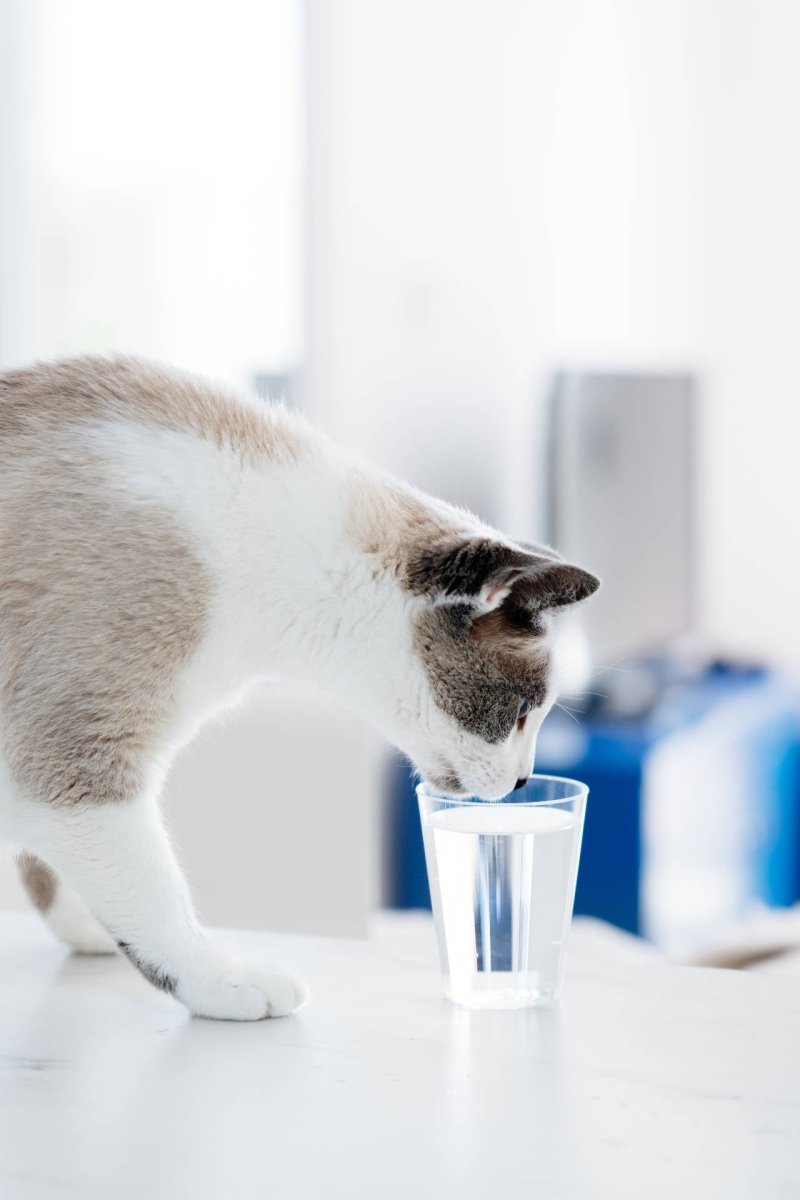My cat doesn't drink: When you should worry
Cats are masters at making their owners anxious. Especially when it comes to drinking. Is your cat not drinking or drinking very little? Don't panic! Often, there's nothing serious behind it. But: Water is just as vital for our felines as it is for us. Find out here why your cat might not be drinking enough, when it's really dangerous, and how to encourage them to drink more water.
Why do cats drink so little? Nature plays a role
Cats descend from desert-hardened ancestors who learned to survive on minimal amounts of water. This explains why your cat won't be found at the water bowl all the time. In the wild, cats get most of their water from prey. But for domestic cats, who are primarily fed dry food, things are different.
Possible reasons why your cat drinks little:
-
Dry food: Contains little moisture.
-
Standing water: Cats often prefer running water.
-
Incorrect placement of the bowl: Cats do not like to drink where they eat or where their litter box is.
-
Not a habit: Some cats generally drink less.
When does it become dangerous if your cat doesn't drink?
It's important to know: A cat can't go without water for long. If your cat doesn't eat or drink anything or very little for several days, you should take action now.
Alarm signals:
-
Dehydration: You can test this by gently lifting the skin on your neck. If it stays upright, you're dehydrated.
-
Lethargy: Your cat seems weak and tired.
-
Sunken eyes: A sign of dehydration.
-
Dry nose and gums: Another warning sign.
Important: If your cat doesn't eat or drink for more than 24 hours, you should definitely take it to a veterinarian. This is when things become truly dangerous.
How much should a cat actually drink?
You may be wondering: How much water does my cat actually need? Daily water requirements depend on factors such as size, activity level, and diet.
Guidelines:
-
A cat needs about 50 ml of water per kilogram of body weight daily.
-
For a 4 kg cat, that would be about 200 ml of water per day.
If your cat is fed wet food, they'll already be getting a large portion of their water intake from the food. However, with dry food, they'll need more water.
Practical tips: How to motivate your cat to drink
Don't worry, there are a few things you can do to make drinking more palatable for your cat. Here are a few tried-and-tested tips:
1. Set up several water bowls
-
Distribute several bowls around the apartment.
-
Make sure they are not standing directly next to the food or litter box.
2. Water bowl made of the right material
-
Plastic bowls absorb odors. Many cats prefer stainless steel or ceramic bowls.
3. Offer running water
-
Cats love running water. A drinking fountain can work wonders!
4. Refine water
-
Add a few drops of tuna water (no salt!) or chicken broth.
5. Wet food instead of dry food
-
Wet food contains about 70-80% water and thus covers a large part of the needs.
Cat not drinking? Possible health causes
It's not always the water source or food that's causing the problem. Sometimes, an illness is the reason your cat isn't drinking.
Possible diseases:
-
Kidney problems: A common problem in older cats.
-
Urinary tract infections: Can cause cats to experience pain when drinking.
-
Dental diseases: When there is pain in the mouth, cats avoid eating and drinking.
Tip: Observe your cat closely and have it examined by a veterinarian if you suspect anything.
Tricks and creative ideas: How to get your cat to drink water
If the classic tips don't help, you can get creative:
-
Flavored ice cubes: Freeze tuna water and place the cubes in the bowl.
-
Playfully get to the water: Use interactive drinking fountains or water games.
-
Reposition water bowls: Place bowls in your cat’s favorite spots.
Small changes can often work wonders.
Conclusion: Cat not drinking? Here's how to find the solution
If your cat isn't drinking, it's important to determine the cause. Simple tricks like a drinking fountain or switching to wet food often help. But when does it become dangerous? After 24 hours without water at the latest, you should take action and seek veterinary advice.
Summary of the most important tips:
-
Offer multiple drinking options.
-
Running water motivates cats.
-
Watch for signs of dehydration.
-
Check for health reasons such as kidney problems or toothache.
With a little patience and the right measures, you'll surely be able to get your furry friend back to the water soon. Because a well-cared-for cat is a healthy and happy cat!



